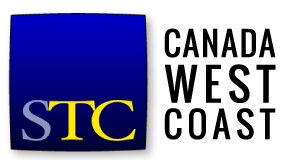
On February 15, 2022, technical writer and Mount Royal University instructor Lyndsay Steffler outlined what a portfolio is, pieces to include, portfolio types, and format options.
Composed of a collection of “artifacts” that demonstrate skills and experience, a portfolio tells your story of success, embodies your talent, and highlights your accomplishments. While we make claims in interviews about what we can do as technical communicators, our portfolios back up these claims.
Pieces to include
Using the acronym PEAKS, Steffler outlined five areas to cover in a portfolio.
- Personal characteristics: Personality traits, behaviours, and soft skills that make you a good employee. Examples include past performance evaluations, thank-you notes, letters of appreciation, and testimonials.
- Experiences: Tasks you have completed or goals you have accomplished, professional or not. These might include volunteering, school assignments, or personal projects.
- Accomplishments: Things you have done particularly well, shown through professional awards or before-and-after statistics such as a reduction in tech support calls or customer complaints after you revised a manual.
- Knowledge: Degrees, certificates, courses, and technical knowledge.
- Skills: Evidence that you can do what is required for a role. Be sure to look at required skills on job postings and tailor this section to fit.
Portfolio types
The content of your portfolio can change, depending on its purpose.
- Master portfolio: A collection of all your artifacts. The portfolio might be extensive, so to make it easy to pull artifacts quickly for a particular job interview, classify each piece (visual design, organization, format, subject, and so on) and write a story (short description) for each artifact, with context and PEAKS categories.
- Can-do portfolio: Customized to a particular audience. Make sure to include items that highlight skills required for the job, but keep it to a manageable size; use one piece to demonstrate multiple PEAKS if possible.
- Writing-sample portfolio: Specific assignment for a job application or interview follow-up. This can’t be prepared ahead of time, so ask yourself or the employer these questions to determine the audience before writing:
–Technical or nontechnical? (So you can decide the level of language)
–Expert or beginner? (Determine depth of subject and purpose)
–Formal or informal? (Customize the voice, tone, page layout, and construct)
Format
- Paper (hard copy): Portable, versatile, private (so ideas cannot be stolen); demonstrates what the artifacts would look like printed. But: storing and finding hard copies can be difficult. If you take originals to interviews, never leave them with the employer! They could be damaged or lost.
- Electronic (USB or your own device): No need to worry about internet access at the interview; easier to store and find documents. But: you need to bring a computer. Also, be aware of how an electronic presentation will look and behave before the interview. Don’t let the technology become the focus, instead of your audience.
- Web-based: Published on a website for wide availability. But: more generic, so you can’t strategically choose artifacts. Include an About Me section, up-to-date résumé, social media accounts, and current contact information.
Steps to building a portfolio
- Decide on the specific career niche or job type you want.
- Outline PEAKS for your chosen career.
- Identify artifacts that support your PEAKS. If you don’t have a lot of work experience, look for volunteer opportunities, courses, or personal achievements to add to your qualifications.
- Organize your master portfolio. Pull all your work, categorize it, and write those stories.
- Look for job postings and assemble your can-do portfolio. Take no more than 10 artifacts to the interview, laying out three in the beginning.
Missed the meeting?
Register to receive a link to the recorded webinar!
STC members and students: Register here.
Non-members: Register here.
